The Coastal Artillery Corps in WW1
"The longest-range field gun in the world
Produced by the Ordnance Department, US Army, for service in France, though the hostilities ceased before they reached General Pershing. More than a hundred of these guns are said to have been prepared for shipping to France, and their range and power would probably have an astonished the Germans, as did the great naval guns mounted on railway cars and manned by American seamen, that did such effective work in the closing days of the conflict."
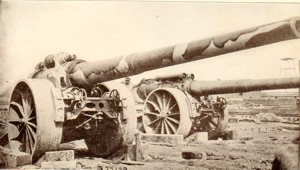
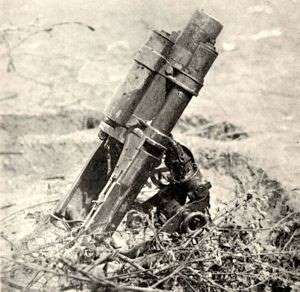
Captured German "Minnie"
National Archives Photo
The Coastal Artillery Corps was responsible for the installation and Operation of aquatic Minefields. They were under observation and detonated remotely. Larger vessels "mine planters" were manned by civilian crews until 1918 when the US Army Mine Planter Service was created. Mines were considered to be the primary armament of coastal defense.
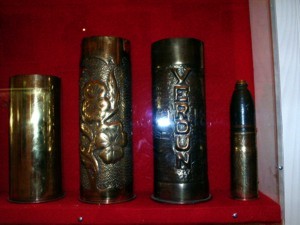
Trench Art
Created by WW1 Soldiers from spent shells
Battery C, 151st Artillery, Coastal Artillery Corps
Editors note: The gentleman on the far right is George Allen Bridges of Greensburg, Decatur County, Indiana, my grandfather. Photo from the family collection.
He was a member of a WW 1 veterans group, the 3H Club, in Vallejo, California. The 3 H's stood for Healthy, Hearty, and Handsome.
Service record: April 12, Noviant; April 29 to May 28, St. Jean; Sept. 12, St. Mihiel; Oct. 21 - 24, Bois de Grand Portin, France. Served overseas from August 14, 1917, to February 3, 1919.
The WW1 designation of Coastal Artillery Corps was created in 1901 when the US Army Artillery was divided into two divisions, 126 Companies of Heavy Artillery and 30 Companies of Light (Field) Artillery. This was necessitated by the difference in training required to man heavy guns versus training for the quicker movements of light artillery (4 to 6 lb.) field guns. The Heavy Artillery (8 lb. or greater) was named the Coastal Artillery Corps and played a major roll in World War 1 when the War stagnated into entrenched positions on the front lines.
Initial involvement of the CAC was with large-caliber guns, stationary mounted, along with the coastal areas and foreign outposts with forts or fortified gun outposts. We were not prepared for the large scale troop movements, and as the United States entered the fighting in Europe, they initially used French or British made weapons.
80% of the men who lost their lives on the battlefields, fell to artillery fire.
The evolution of warfare, specifically the use of aerial bombing and heavy tanks lead to the CAC being deactivated during WWII and officially abolished in 1950.
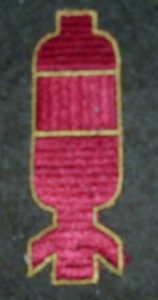
Trench Mortar Division shoulder patch

Coastal Artillery Corps Insignia
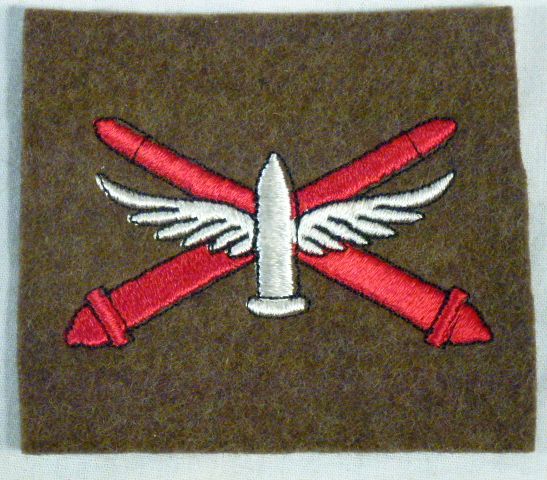
WW1 Coastal Artillery Corps Patch
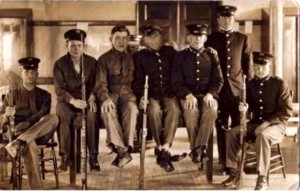
Soldier's Stories:
William Wirt Morea, Coastal Artillery Corps, Lake County, Indiana
“While I was with Co. A., Ammunition Train, 1st Div., I was in practically every place in and around the war zone. In order to mention all, I would need a war map of France. I was with the 28th Infantry, 1st Div., which was the first American army outfit across into Germany on December 13, 7:30 a.m. I was also with the H Co. that was in the 2nd Battalion. I believe I'm one of the first boys of Lake County to cross the Rhine. After being chosen for the Composite Army, Co. B., I traveled in every parade they took part in and return with the “General Pershing Guard of Honor” as we were called.
Paul Vernon Wycoff, Coastal Artillery Corps, Ripley County, Indiana
The two-day trip from Newport to New York was full of peril from floating mines. The soldiers wore life belts the entire time. They reached New York in time to march in the Thanksgiving Day parade.
Edward Leroy Wright, Coastal Artillery Corps, Allen County, Indiana
Son of Mr. and Mrs. Edward A Wright; born May 27th, 1900 in Hammond, Indiana. He was living in Ft. Wayne when he enlisted in the US Regular Army in February, 1917. Sent to Columbus Barracks, Ohio, hence to Fort Terry, NY. Assigned to the 2nd Company, Coastal Artillery Corps, Anti-air Craft Division. Went overseas (exact date not known), and was in active service throughout the war. Died of influenza, December 17, 1918, in Evacuation Hospital #1, Ravigny, France. Buried in the American Cemetery, Ravigny.
Big Guns
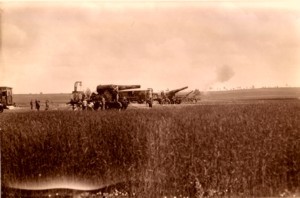
320 MM Field Artillery Field School, Batteries Land M, 52nd Coast Artillery Corps, 320 MM railway.
Army Heavy and Railroad Artillery School, Mailly, Auhe, France.
National Archives Photo 12492 Group 111, Indiana War Memorial Archives
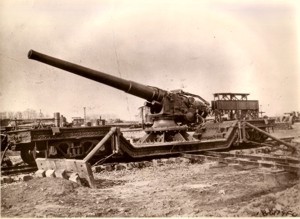
Guns were stripped from US Battleships to be used inland. US Official Photo, "America's War For Humanity"
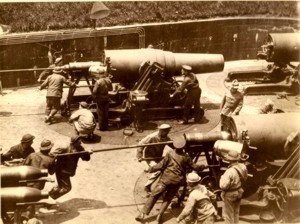
Coastal Artillery Corps testing huge mortars at a Fort on the Atlantic Coast National Archive Photo CN3123 Group 64, Indiana War Memorial Archives
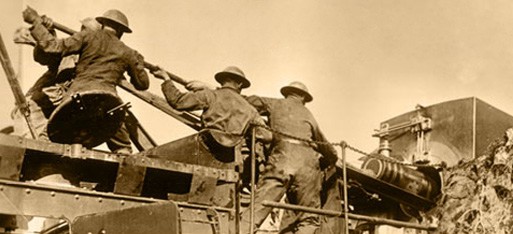
35th CAC, 80th Div. loading a 14" gun on the Argonne Front
National Archive photo, Indiana War Memorial Archives
![CACRR artillery gun Real-photo postcard of a military railway artillery gun on train tracks near the Verdun front in France during World War I. The gun is pictured firing at night (Undated) [Photograph by: Shaffer].](https://wwvets.org/wp-content/uploads/2020/08/CACRR-artillery-gun.jpg)
Real-photo postcard of a military railway artillery gun on train tracks near the Verdun front in France during World War I. The gun is pictured firing at night (Undated) [Photograph by: Shaffer]. US Army Signal Corps
![CACRR guns Real-photo postcard of a military railway artillery guns on train tracks, parked somewhere along the front in France during World War I (Undated) [Photograph by: Shaffer].](https://wwvets.org/wp-content/uploads/2020/08/CACRR-guns.jpg)
Real-photo postcard of a military railway artillery guns on train tracks, parked somewhere along the front in France during World War I (Undated) [Photograph by: Shaffer]. US Army Signal Corps photo
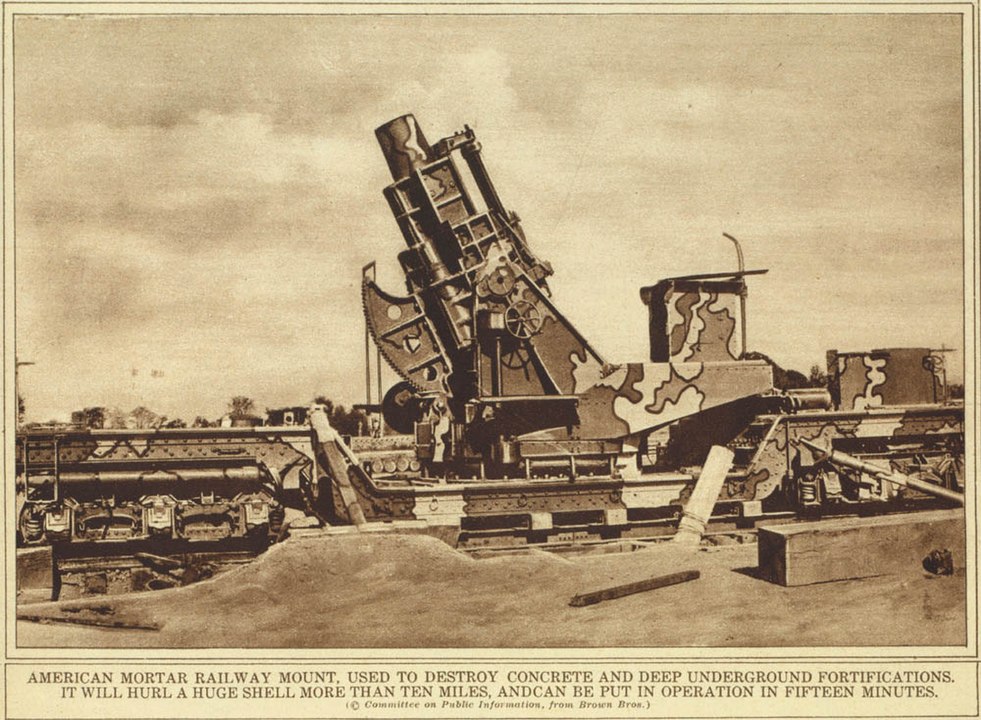
"American Mortar railway mount used to destroy concrete and deep underground fortifications. It will hurl a high shell more than ten miles and can be put into operation in fifteen minutes.
By US Government - This version published in " The War of the Nations & quot; page 193, December 1919. Downloaded from US Library of Congress archive of WWI rotogravure magazine pages at http://memory.loc.gov/ammem/collections/rotogravures, Public Domain, https://commons.wikimedia.org/w/index.php?curid=4172398